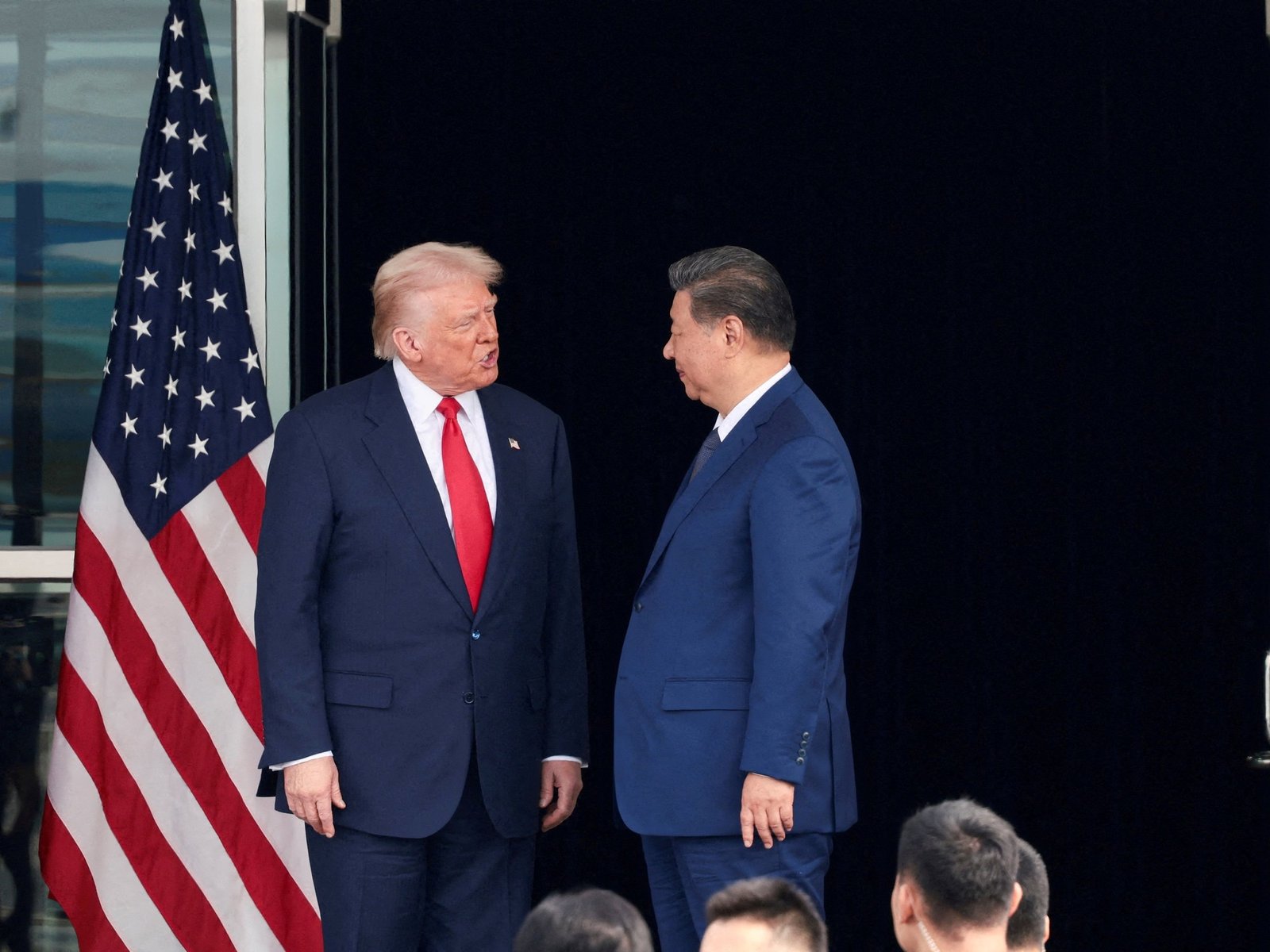INTERNACIONAL
Taiwan on edge after Pope Francis’s death, closely watching Vatican-China relations

KAOHSIUNG, Taiwan – Some in Taiwan are watching with growing unease as the Catholic Church prepares to elect a new leader following the death of Pope Francis. The Holy See is the only European state that maintains diplomatic relations with Taipei, but some fear the growing ties between the Vatican and Beijing could change things.
Taiwan is home to fewer than 300,000 Catholics. By contrast, estimates put the number of Catholics in communist China at anywhere between eight and 12 million, with another 390,000 in Chinese-ruled Hong Kong. Despite these figures, the Holy See continues to recognize Taiwan as the sole «China.»
After Pope Francis’ death, Taiwan’s President William Lai quickly said he planned to attend the funeral. A short time later, however, Taiwan’s Ministry of Foreign Affairs announced that former Vice President and devout Catholic Chen Chien-jen will be Taiwan’s envoy.
POPE FRANCIS EMPHASIZED CATHOLICISM GLOBALLY, REACHED BEYOND US, EUROPE INTO IMPOVERISHED NATIONS
This picture taken on August 10, 2018, shows worshippers lining up to receive holy communion during a Catholic mass in the Holy Spirit Church in Yanshui, about an hour’s drive from the southern city of Tainan. With a cross rising from a red pagoda roof and two lion statues guarding the entrance, a Catholic church in southern Taiwan could easily be mistaken for one of the ubiquitous temples dotting the island. There are more than 1,000 churches across the island, but the Holy Spirit Church is particularly unique. (SAM YEH/AFP via Getty Images)
According to Taipei-based lawyer and political risk analyst Ross Feingold, Taiwan will be disappointed that President Lai will miss this gathering of world leaders. «The precedent exists for Taiwan’s president to attend a pope’s funeral. In 2005, then-President Chen Shui-bian attended John Paul II’s funeral, so,» he claimed, «it’s safe to assume President Lai’s team inquired whether Lai could attend Francis’ funeral, and equally safe to assume the Holy See’s response was a negative one.»
After Pope Francis took office in 2013, the Vatican began to build ties with Beijing. In 2018, it signed a controversial agreement with China on the appointment of bishops. The deal—renewed and extended several times—gives both sides input on bishop selection, an attempt to bridge the divide between China’s state-run Catholic Church and an underground church loyal to Rome. Vatican officials insist the agreement is pastoral, not political. Still, for Taiwan, it is seen as a warning sign.

This picture taken on August 10, 2018, shows a motorcyclist riding past the Holy Spirit Church in Yanshui, about an hour’s drive from the southern city of Tainan. (SAM YEH/AFP via Getty Images)
China, which cut ties with the Holy See in 1951, demands that all countries end diplomatic relations with Taiwan before establishing relations with Beijing. Taiwan’s official allies now number but 12, and the Holy See is its most symbolically significant diplomatic partner.
But Thomas Tu, a Vatican diplomacy expert at Taiwan’s National Chengchi University, told Fox News Digital that fears of an imminent switch are overblown. «This isn’t just about politics—it’s about the global Catholic mission,» Tu said. «The Vatican has survived empires. It’s patient.» Tu cited the Vatican’s relationship with Vietnam as evidence of pragmatic patience. China and Vietnam do not have formal ties, but the Vatican maintains a high-level religious representative there.
FIRST PHOTOS RELEASED OF POPE FRANCIS IN HIS CASKET; FUNERAL SET FOR SATURDAY
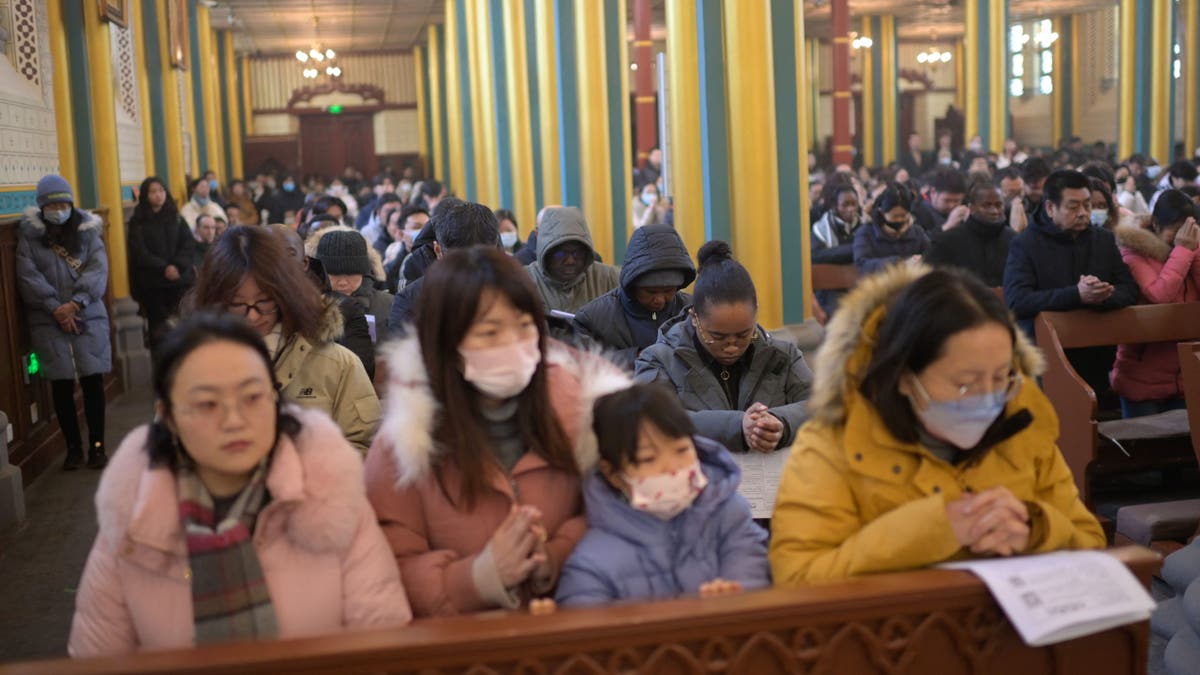
People attend a Christmas mass at the Xishiku Catholic Church in Beijing on December 24, 2023. (Pedro Pardo/AFP via Getty Image)
Pope Francis believed that engagement with China, however imperfect, is preferable to nothing. Francis was the first pope to fly through Chinese airspace and famously sent greetings to President Xi Jinping in 2014. On his visit to Mongolia in 2023, the pontiff also sent a «warm greeting to the noble Chinese people.»
Each overture to Beijing has drawn criticism from within the Church, particularly from outspoken China critics, such as 93-year-old retired Cardinal Joseph Zen of Hong Kong, who was arrested in 2022 after China imposed a National Security Law that criminalized almost every form of dissent in that supposedly autonomous special administrative region. Zen’s passport was recently returned to him by authorities so he could attend the pope’s funeral.
Zen and others view any warming of ties with Beijing as kowtowing to an officially atheist regime.
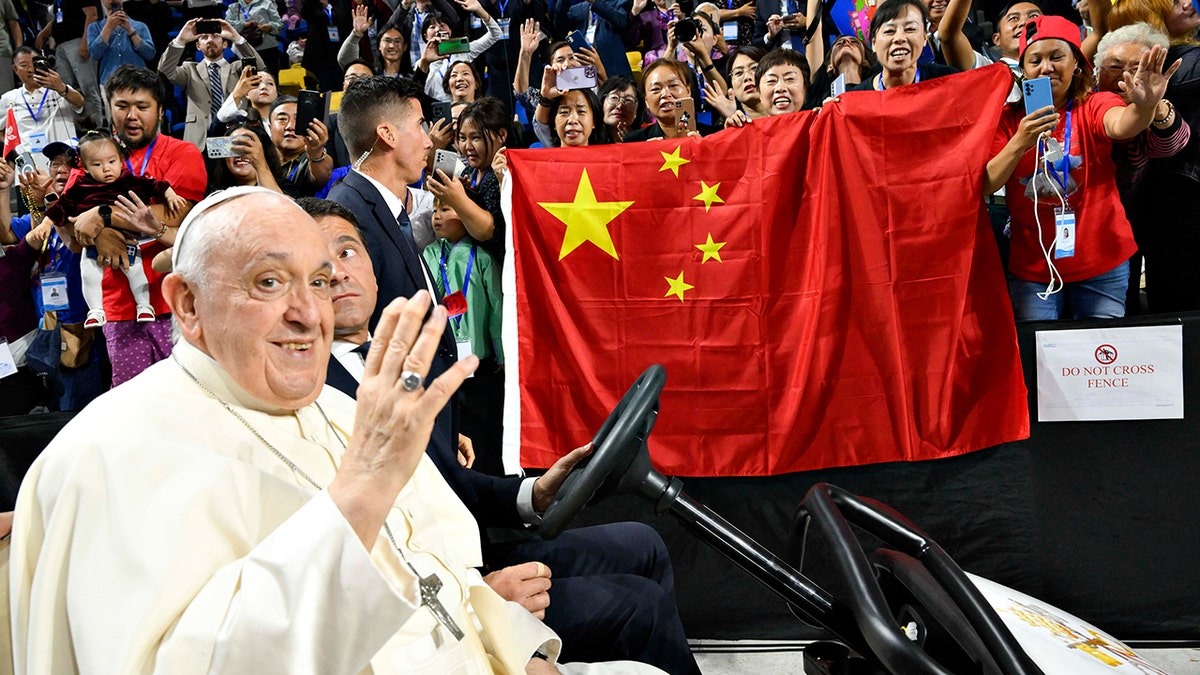
Pope Francis greets the people of China as he concludes Mass in the Hun Theatre on September 3, 2023, in Ulaanbaatar, Mongolia. (Vatican Media via Vatican Pool/Getty Images)
Since 1957, Beijing, via its Chinese Patriotic Catholic Association, has kept a tight leash on millions of Chinese Catholics. Pope Francis accepted some compromises with China, but the Vatican wants autonomy in spiritual matters, which may require a miracle to accomplish under China’s one-party dictatorship.
Some observers suggest that Beijing may eventually allow more space for the Vatican, but any formal deal would require the Holy See to sever ties with Taiwan, a non-negotiable prerequisite for China.
CLICK HERE TO GET TO THE FOX NEWS APP
With a new pope being elected in the next month, some in Taiwan are worried about a shift, but few experts believe the next pontiff will make any hasty decisions. «There’s no rush,» said Dr. Chang Ching, a Senior Research Fellow of the ROC Society for Strategic Studies, «The Vatican knows how to wait, and China isn’t willing yet to grant the Chinese Catholic community the same privileges Catholics enjoy in most other nations. This seventy-plus-year rift is just a tiny moment in the long history of the Church and the even longer history of Chinese civilization.»
INTERNACIONAL
Panorama Internacional: Horas bajas y cuotas de realismo, desafíos trumpistas
INTERNACIONAL
Coast Guard defends dropping hate label for swastikas, nooses, Confederate flags
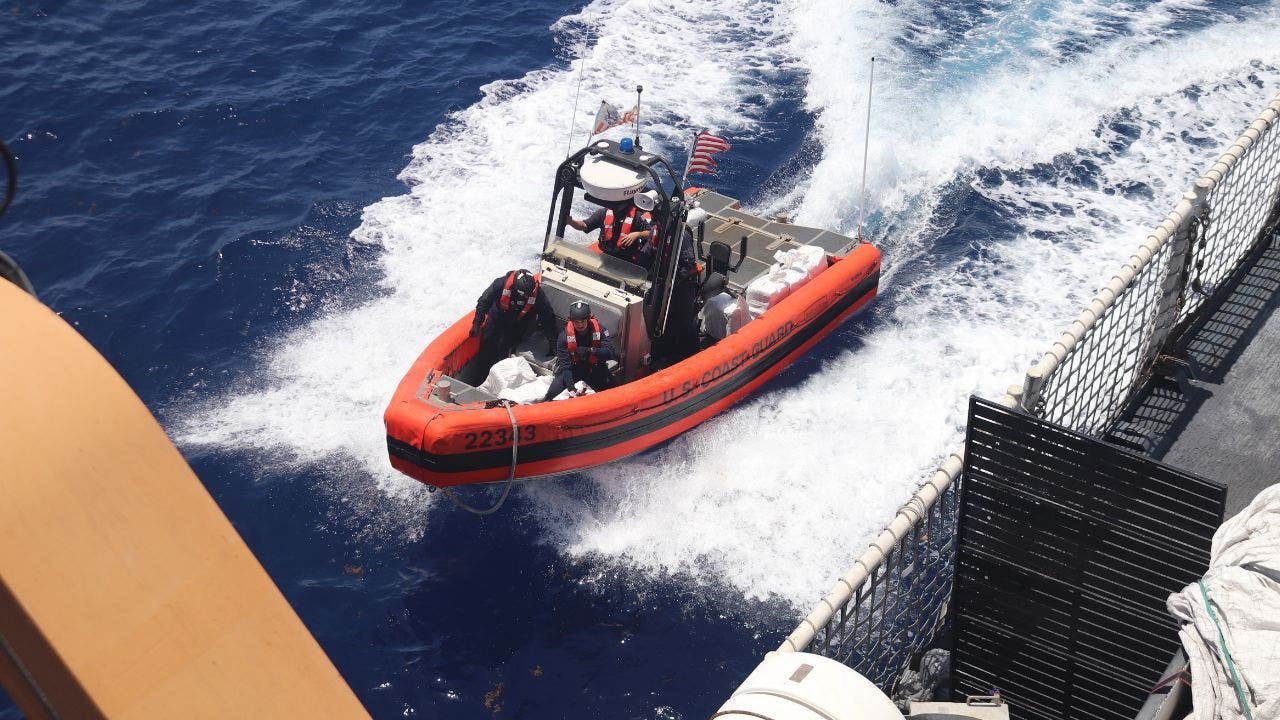
NEWYou can now listen to Fox News articles!
The Coast Guard is downplaying its policy change to no longer refer to displays of swastikas and nooses as a «hate incident» — after it distributed new guidance to remove the term «hate incident» from its vocabulary altogether.
While the service previously identified displays of swastikas, nooses, Confederate flags, and other supremacist or antisemitic symbols as a «potential hate incident,» the new guidance now labels them as «potentially divisive symbols and flags.» The change was first reported by The Washington Post.
Despite the alteration, the Coast Guard claims that it remains committed to barring the symbols from the service and penalizing those who display them. Additionally, it said that it still considers the symbols «extremist imagery.»
«The claims that the U.S. Coast Guard will no longer classify swastikas, nooses or other extremist imagery as prohibited symbols are categorically false,» Adm. Kevin Lunday, acting commandant of the Coast Guard, said in a Thursday statement to Fox News Digital. «These symbols have been and remain prohibited in the Coast Guard per policy.»
The Coast Guard is downplaying its policy change to no longer refer to displays of swastikas and nooses as a «hate incident.» (U.S. Coast Guard)
‘OPTICAL ILLUSION’ SWASTIKA FLAGS DISTRIBUTED TO MULTIPLE CONGRESSIONAL OFFICES PROMPT INVESTIGATION: SOURCES
«Any display, use or promotion of such symbols, as always, will be thoroughly investigated and severely punished,» Lunday said. «The Coast Guard remains unwavering in its commitment to fostering a safe, respectful and professional workplace. Symbols such as swastikas, nooses and other extremist or racist imagery violate our core values and are treated with the seriousness they warrant under current policy.»
The new guidances state that the public display of the Confederate battle flag is banned and will be pulled from all Coast Guard workplaces, common access areas, public areas or operating facilities. Previous guidance also prohibited such public display of the Confederate battle flag.
Commanding officers and other leaders are instructed to inquire about public displays of other symbols identified as «potentially divisive,» and are granted the authority to direct or order the removal of those that negatively impact moral and mission readiness.
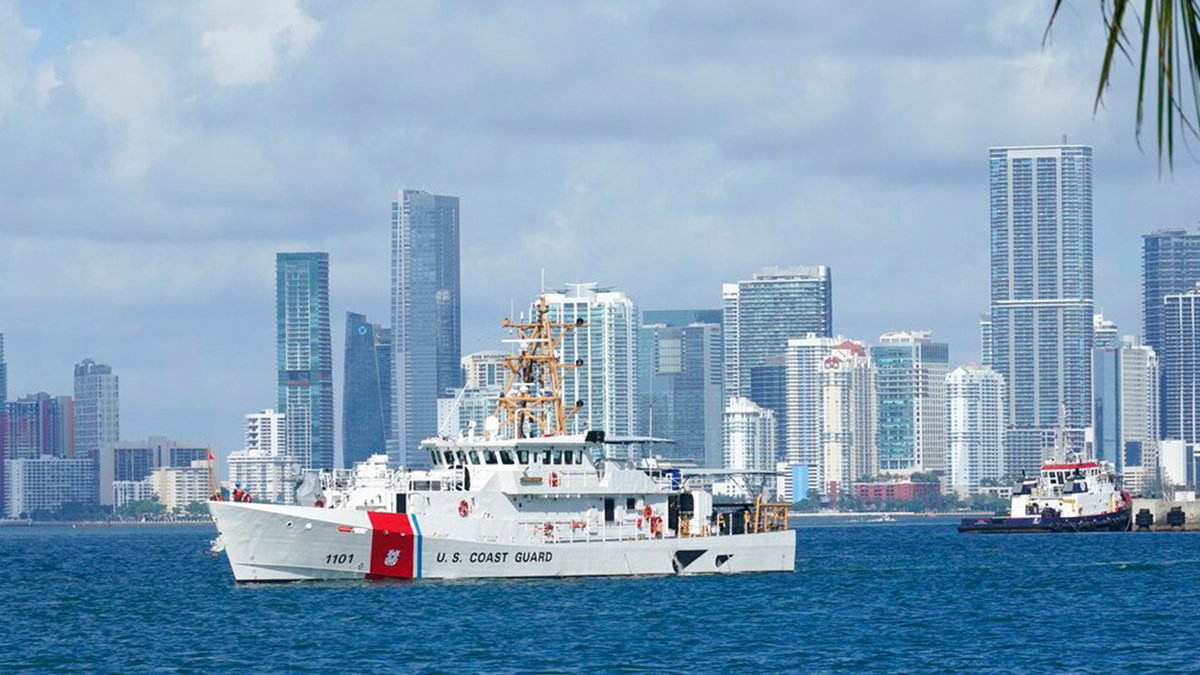
The Coast Guard said that its updates on its harassment policy were made in alignment with orders from President Donald Trump and the Pentagon. (Marta Lavandier/The Associated Press )
HEGSETH, NOEM ON BOARD WITH ‘VITAL STEP’ TO CREATE COAST GUARD SECRETARY AMID TRUMP’S DRUG SMUGGLING CRACKDOWN
The guidance also says it is completely eradicating the term «hate incident,» and that incidents that were previously handled as a «potential hate incident» will not be processed as a harassment report.
«Conduct previously handled as a potential hate incident, including those involving symbols widely identified with oppression or hatred, is processed as a report of harassment in cases with an identified aggrieved individual…The terminology ‘hate incident’ is no longer present in policy,» the new guidance said.
The Coast Guard did not immediately respond to a request for comment from Fox News Digital on why it removed the term «hate incident» from its new guidance.
DHS RIPS HOUSTON HALLOWEEN DISPLAY DEPICTING HANGING OF ICE AGENTS, DEMANDS ‘SANCTUARY POLITICIANS’ STAND DOWN
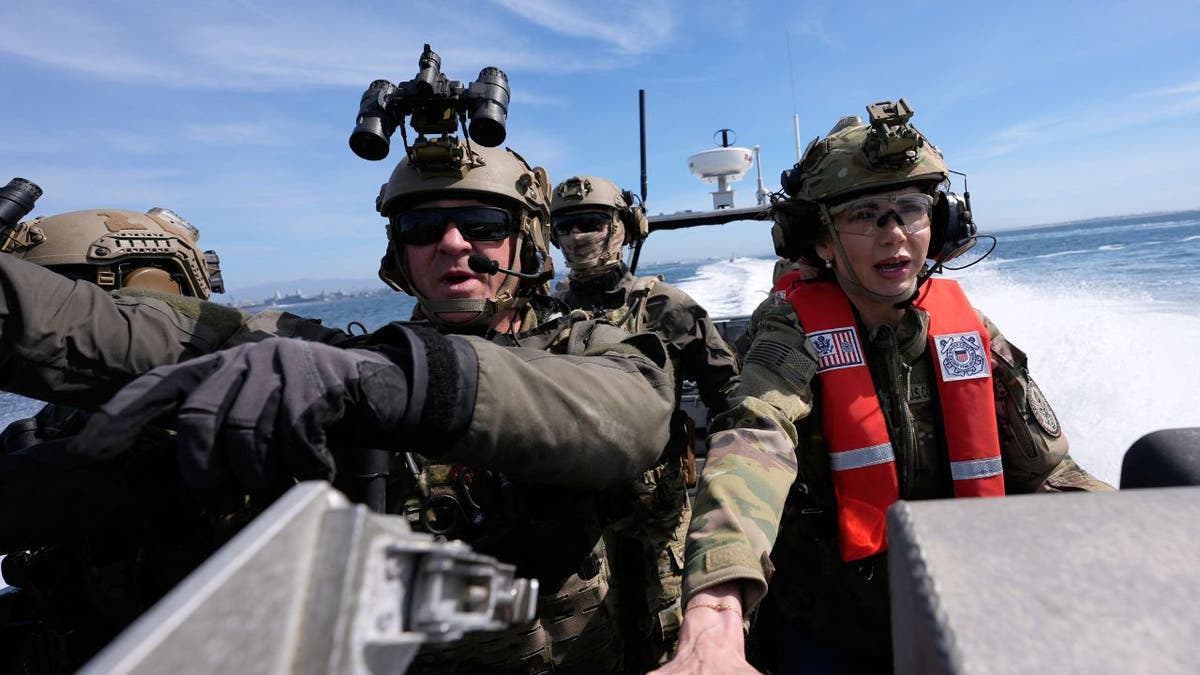
Secretary of Homeland Security Kristi Noem (right) pilots a U.S. Coast Guard response boat-small with the Maritime Security Response Team in San Diego, March 16, 2025. (Alex Brandon / POOL / AFP)
The new guidance also puts some limits on when harassment reports can be made. The updated policy dictates that reports of harassment, excluding those of sexual harassment, be made within 45 calendar days of an incident. The new guidance does say that there is some «discretion for reports to be accepted beyond this time frame.»
That’s a departure from the service’s previous policy, which did not have a deadline in place for reporting these incidents.
After the Post’s initial report on the update, the top Democrat on the House Transportation & Infrastructure Committee, Rep. Rick Larsen of Washington, said there is no room for debate over whether nooses or swastikas are hate symbols.
«Lynching is a federal hate crime. The world defeated the Nazis in 1945. The debate on these symbols is over. They symbolize hate,» Larsen, whose committee has oversight authority over the Coast Guard, said in a statement Thursday. «Coast Guard: be better.»
The Coast Guard is the only branch of the military to fall under the Department of Homeland Security, but has launched initiatives including Force Design 2028 to revamp its organizational structure, acquisitions, contracting and technology, among other changes, to align more closely with other services that fall under the purview of the Department of War.
The Coast Guard said that its updates on its harassment policy were made in alignment with orders from President Donald Trump and the Pentagon.
CLICK HERE TO DOWNLOAD THE FOX NEWS APP
The Pentagon did not immediately respond to a request for comment from Fox News Digital on whether it was eyeing similar changes in policy for its military branches. However, Secretary of War Pete Hegseth instructed the Pentagon to conduct a review of its hazing and harassment policies in September.
The Pentagon also has its own set of extremism guidelines, which effectively bans displaying Confederate flags or those with a swastika on them. Only preapproved flags, including state flags or military service flags, are permitted.
coast guard,donald trump,pentagon,homeland security
INTERNACIONAL
EE.UU. decidió rechazar el comunicado final del G20 y hay expectativas por la posición de la Argentina
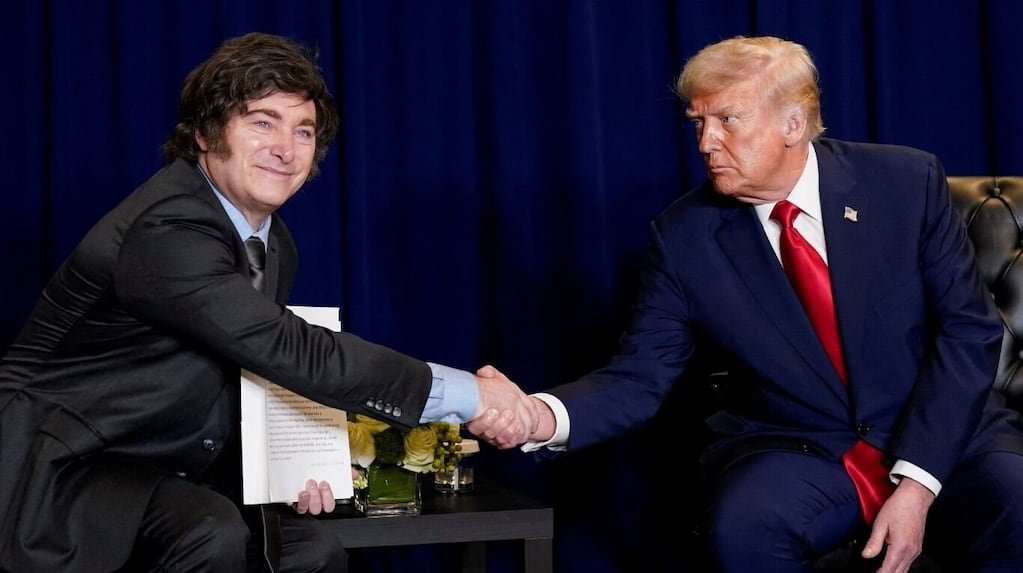
Donald Trump redobla la presión y el boicot sobre la próxima cumbre de líderes del G20 que se desarrollará el fin de semana en Johannesburgo, Sudáfrica. A las ya anunciadas ausencias de él y de cualquier representante estadounidense, en los últimos días se le sumó una comunicación oficial que podría romper con el histórico consenso que existe en el comunicado final del G20.
“Las prioridades de Sudáfrica en el G20 son contrarias a la postura política de Estados Unidos, y no podemos apoyar el consenso sobre ningún documento negociado bajo su Presidencia”, esgrime una carta con sello a la que tuvo acceso TN, enviada por la embajada norteamericana en Pretoria al Departamento de Relaciones Internacionales de Sudáfrica.
Leé también: En medio del alineamiento con EE.UU., el canciller Quirno se reunió por primera vez con el embajador chino
De concretarse esta posición, sería la primera vez en la historia del G20 que la cumbre termina sin un documento final de consenso entre las partes. En la diplomacia global se señala que hasta en 2022 en Bali, año del inicio de la invasión a gran escala de Rusia a Ucrania, se logró alcanzar un texto común. Todo está listo en Johannesburgo para recibir el fin de semana a los principales líderes globales. (Foto: REUTERS/Siphiwe Sibeko)
“Estados Unidos se opone a la publicación de cualquier documento final de la cumbre del G20 bajo la premisa de una posición consensuada. Si se publica un documento durante su presidencia, se redactará únicamente como una declaración de la Presidencia para reflejar con precisión la ausencia de consenso”, lanza la representación norteamericana en la misma carta.
Trump ya había anunciado que él no participaría, como tampoco lo haría ningún representante de su gobierno. Tal es así, que la bandera de Estados Unidos no está presente durante las reuniones técnicas y de negociación que se dan en los días previos al máximo cónclave de líderes. Hay un dato a tener presente: el G20 del 2026 se desarrollará en territorio norteamericano.
Leé también: Una exasesora de Trump dijo que EE.UU. busca aumentar la cooperación militar con la Argentina
La posición de la Casa Blanca responde al marcado rechazo a los organismos multilaterales desde el regreso de Trump y a las fuertes acusaciones contra el presidente sudafricano, Cyril Ramaphosa, por el supuesto “genocidio blanco” que el propio magnate le achacó durante una visita en el Salón Oval en mayo de este año.
Pese a que en las últimas semanas se escucharon críticas a la organización sudafricana por los tiempos de negociación y la longitud de los textos debatidos, el fuerte mensaje de Trump y su rechazo a acompañar el histórico consenso despertó sorpresa en algunos e incredulidad en otros, aunque todos sabían que esto era algo que podía suceder.
La incómoda posición de la Argentina en el G20
Javier Milei ya había decidido acompañar a su aliado norteamericana en la decisión de no asistir a la cumbre en Johannesburgo y en su lugar enviar al nuevo canciller Pablo Quirno. Con este nuevo escenario, los ojos vuelven a posarse sobre la Argentina para ver si acompaña también una decisión que le podría representar un costo mucho más alto por pagar que el que afronte Estados Unidos.

El canciller Pablo Quirno estará en Sudáfrica en representación de Javier Milei. (Foto: REUTERS/Evelyn Hockstein)
El anuncio de la Casa Rosada de que Milei no viajaría ya había generado recelo entre históricos socios políticos y comerciales. Muchos son los que creen y repiten que la Argentina no tiene el mismo peso que Estados Unidos, y que necesita estar en este tipo de foros del más alto nivel. A muchos les gustaría estar sentados en esa mesa.
La diplomacia argentina y los cuadros técnicos siguieron trabajando para concretar reuniones bilaterales y sostener la posición del país en cada uno de los puntos o grupos de trabajo que se plantean en los meses y semanas de preparación.
Hay otro factor a tener en cuenta. Estados Unidos no acompañará el comunicado, pero tampoco estará presente, por lo que no tendrá que levantar la mano frente al resto de los representantes para decir “yo no”. Si la Argentina decide seguir los pasos de Washington, el canciller Quirno sí tendrá que defender y anunciar la posición in situ.
Donald Trump, Javier Milei

